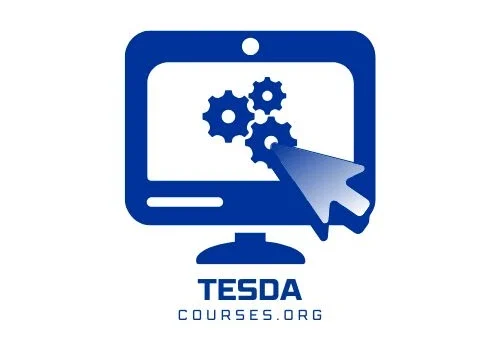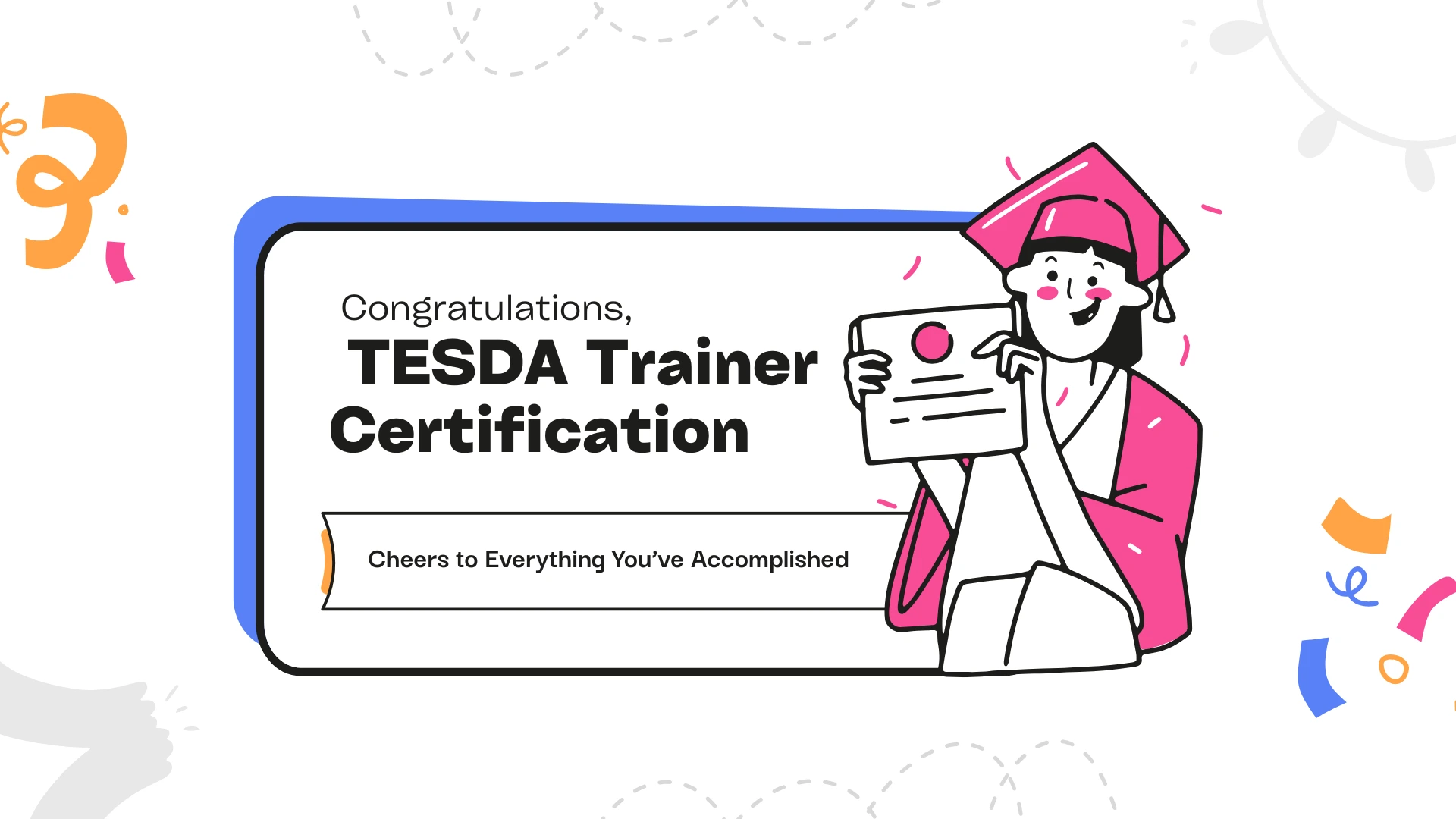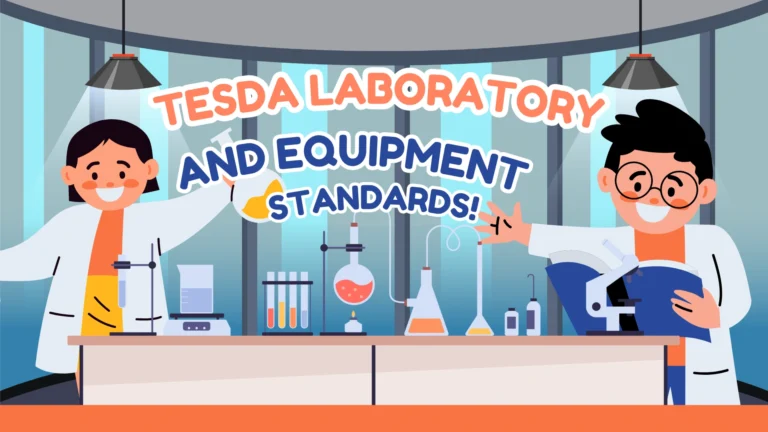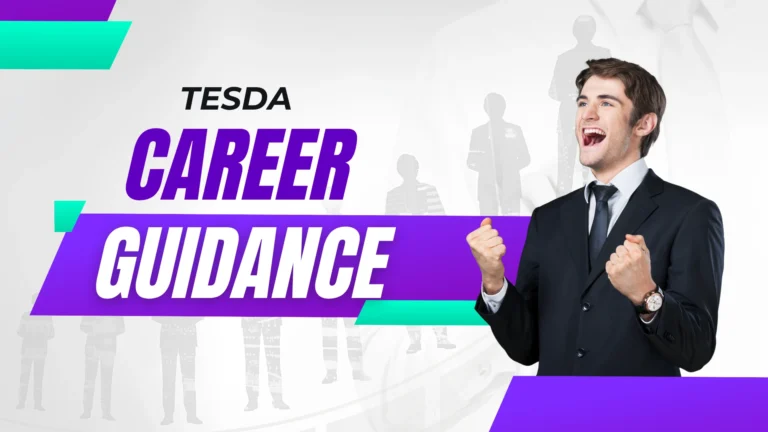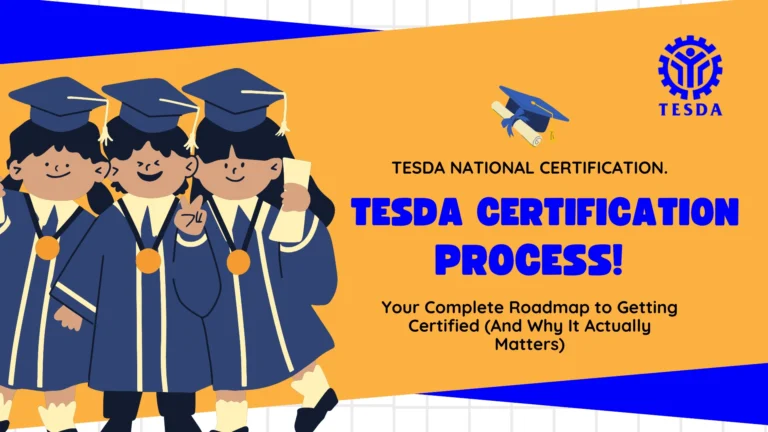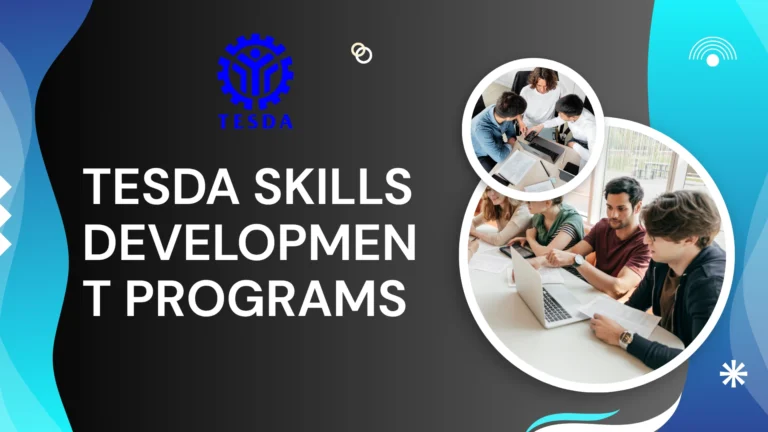TESDA Trainer Certification: Your Complete 2025 Guide to Becoming a Certified Vocational Trainer
Introduction: The Moment I Realized Training Was My Calling
Picture this: I’m standing in front of twenty eager students, showing them how to properly configure a router. One kid in the back—let’s call him Paolo—has been struggling for weeks. Then suddenly, his eyes light up. “Sir, I get it now!” he shouts, his face breaking into the biggest grin.
That moment? That’s when I knew I wanted to become a certified trainer.
But here’s what nobody tells you: Wanting to teach and being qualified to teach are two completely different things. In the Philippines, if you want to train technical and vocational students through TESDA-accredited programs, you need one thing above all else: TESDA trainer certification.
I learned this the hard way. I had the skills, the passion, and even some informal teaching experience. But without that certification? Training centers wouldn’t even look at my resume. It’s like trying to drive without a license—doesn’t matter how well you can handle the wheel if you can’t legally get behind it.
Whether you’re an international student who fell in love with the Philippines and wants to build a training career here, a professional looking to transition into education, or someone who just loves sharing their expertise, getting your TESDA trainer certificate is your golden ticket into the vocational education world.
Let me walk you through everything you need to know—from understanding what TESDA trainer certification actually is, to navigating the requirements, passing the exam, and finally building a rewarding career as a TESDA professional trainer.
Trust me, it’s worth it. And it’s totally doable.
What Is TESDA Trainer Certification? (And Why It Matters)
Let’s start with the basics. TESDA trainer certification is the official credential that qualifies you to conduct training in Technical Education and Skills Development Authority (TESDA) accredited programs throughout the Philippines.
Think of it as your professional license to teach vocational skills. Just like doctors need medical licenses and lawyers need bar admission, vocational trainers need TESDA certification.
Why This Certification Exists
TESDA didn’t create this requirement just to make your life difficult. Here’s the real reason: Quality control.
The Philippines has positioned itself as a global leader in technical and vocational education. Countries around the world recognize TESDA certifications. That reputation? It depends entirely on the quality of trainers delivering the education.
TESDA trainer certification ensures that:
- Trainers have genuine expertise in their technical field
- They know how to actually teach, not just perform tasks
- They understand competency-based training methodology
- They adhere to professional and ethical standards
- Students receive consistent, quality education regardless of where they train
The Difference Between Certified and Uncertified Trainers
Can you teach without certification? Technically, yes—but only in non-TESDA programs. And here’s the catch:
Certified Trainers:
- Can work in any TESDA-accredited training center
- Eligible for government-funded training programs
- Higher salary potential (we’ll get to numbers later)
- Career advancement opportunities
- Professional recognition and credibility
- Can conduct National Certification assessments
Uncertified Trainers:
- Limited to private, non-accredited programs
- Lower pay rates
- No access to TESDA resources and networks
- Cannot certify students officially
- Limited career growth
Bottom line: If you’re serious about a training career in the Philippines, certification isn’t optional—it’s essential.
TESDA Courses for Abroad: The Ultimate Guide to In-Demand NC II & NC III Certifications
TESDA Trainer Certification Requirements: What You Need to Qualify
Alright, let’s talk about the TESDA trainer certification requirements. This is where most people get overwhelmed, but I’m going to break it down into simple, digestible pieces.
The Essential Requirements Checklist
1. National Certificate (NC) in Your Technical Field
You must hold a valid National Certificate at least NC II level in the qualification you want to teach.
What this means: If you want to train people in Automotive Servicing, you need Automotive Servicing NC II (or higher). Want to teach Food and Beverage Services? You need F&B NC II.
Don’t have it yet? You’ll need to take the competency assessment first. This comes before trainer certification, not after.
2. Work Experience Requirement
This is where TESDA separates dreamers from doers. You need:
- Minimum 3 years of practical work experience in your technical field
- The experience must be relevant and verifiable
- Recent experience preferred (within the last 5 years)
What counts as work experience:
- Full-time employment in the field
- Freelance or self-employment (with documentation)
- Entrepreneurship in related business
- Supervised apprenticeships or traineeships
What doesn’t count:
- Student internships (usually)
- Unrelated work experience
- Volunteer work (unless exceptionally documented)
International student note: If your work experience is from another country, it counts! Just make sure you have proper documentation translated to English if necessary.
3. Educational Attainment
You need at least:
- High school diploma or equivalent
- College degree preferred (but not always required)
- Technical-vocational certificate in your field
Reality check: Many successful TESDA trainers don’t have college degrees. Your technical expertise and work experience matter more than academic credentials in most vocational fields.
4. Training Methodology Course (TMC)
This is the big one. You must complete the TESDA Trainer Training Program, specifically:
- Training Methodology Course Level I (TMC I) – Basic
- Duration: 30-40 hours typically
- Covers instructional design, teaching methods, assessment strategies
What you’ll learn:
- How to write learning plans
- Competency-based training approach
- Adult learning principles
- Classroom management
- Assessment and evaluation methods
- Use of training materials and aids
Where to take it: TESDA-accredited trainer training centers (we’ll list them later)
5. Physical and Mental Fitness
You need a medical certificate confirming you’re fit to teach. This includes:
- No communicable diseases
- Mental stability
- Physical capability to demonstrate skills (important for hands-on fields)
How to get it: Any licensed physician can provide this. Some TESDA offices have partner clinics for convenience.
6. Clean Criminal Record
You’ll need:
- NBI Clearance (National Bureau of Investigation)
- Police Clearance
- Barangay Clearance
For international students: You may need clearance from your home country as well. Check with TESDA regional office for specific requirements.
7. Documentation
Prepare these supporting documents:
- Valid government-issued ID (passport for international students)
- Birth certificate (or equivalent)
- Transcript of records or diploma
- National Certificate (NC) copy
- Work experience certificates or employment records
- Training Methodology Certificate
- Medical certificate
- NBI and police clearance
- 2×2 ID photos
| Requirement Category | Specific Requirement | Where to Get It | Typical Cost |
|---|---|---|---|
| Technical Competency | NC II or higher in your field | TESDA Assessment Center | ₱500-3,000 |
| Work Experience | 3+ years relevant experience | Your employment history | Free (documentation only) |
| Education | High school diploma minimum | Your school records | Free (getting copies: ₱50-200) |
| Teaching Skills | Training Methodology Course | TESDA Trainer Training Center | ₱3,000-8,000 |
| Health | Medical certificate | Clinic or hospital | ₱200-1,000 |
| Legal | NBI, Police, Barangay clearance | Government offices | ₱165-500 total |
| Documents | IDs, certificates, photos | Various sources | ₱500-1,000 |
Total estimated cost: ₱4,500-14,000 (depending on if you already have NC and other factors)
The Ultimate Guide to TESDA Training Centers, Courses, and Contact Information Nationwide
The TESDA Trainer Certification Process: Step-by-Step
Now let’s walk through the entire TESDA trainer certification process from start to finish. I’ll give you the realistic timeline and insider tips for each stage.
Step 1: Self-Assessment and Preparation (1-2 weeks)
Before jumping in, honestly evaluate your readiness.
Ask yourself:
- Do I have genuine expertise in my technical field?
- Have I actually worked in this field for 3+ years?
- Am I passionate about teaching and developing others?
- Can I commit time to the certification process?
- Do I meet all the basic requirements?
Action items:
- Review TESDA trainer competency standards for your field
- Gather all existing certificates and documents
- Identify gaps (missing NC? Need work experience proof?)
- Budget for certification costs
Pro tip: Join TESDA trainer Facebook groups. Ask questions. Learn from others’ experiences.
Step 2: Obtain Your National Certificate (If Needed) (1-3 months)
If you don’t already have your NC in the field you want to teach, get it first.
Process:
- Find nearest TESDA assessment center
- Register for competency assessment
- Prepare and study (use training regulations as guide)
- Take assessment (written, oral, practical)
- Receive National Certificate
Timeline:
- Application to assessment date: 2-4 weeks
- Results: 1-2 weeks after assessment
Cost: ₱500-3,000 depending on qualification
Step 3: Complete Training Methodology Course (1-2 weeks)
This is where you learn how to actually teach.
Enrollment process:
- Find TESDA-accredited trainer training center near you
- Check schedule and fees
- Submit requirements and pay fees
- Attend all sessions (usually full-time for 5-10 days)
What to expect in TMC:
Day 1-2: Foundations
- Competency-based training and assessment (CBT&A) principles
- TESDA training regulations
- Trainer roles and responsibilities
Day 3-4: Instructional Design
- Writing learning plans and session guides
- Developing training materials
- Selecting appropriate teaching methods
Day 5-6: Delivery and Assessment
- Classroom management techniques
- Demonstration and practice teaching
- Assessment and evaluation methods
Day 7+: Practice and Evaluation
- Mock teaching sessions
- Peer feedback
- Final evaluation
Graduation: You’ll receive Training Methodology Certificate upon successful completion.
Study tips:
- Don’t skip sessions—attendance is critical
- Actively participate in practice teaching
- Network with fellow trainees
- Take detailed notes (you’ll reference them later)
Step 4: Gain Documented Work Experience (Ongoing)
You need 3 years, so if you’re short, this is your longest wait.
How to document experience:
- Certificate of Employment from each employer
- Tax records or payslips
- Business registration (if self-employed)
- Client testimonials or contracts
- Portfolio of work done
Can’t wait 3 years? Some TESDA offices accept:
- 2 years work experience + relevant college degree
- Combination of teaching experience and technical work
- Apprenticeship under master craftsman (in some trades)
Check with your regional office for flexibility.
Step 5: Prepare Application Documents (1-2 weeks)
Gather everything listed in the requirements section. Organization matters here.
Pro tip: Create a folder with:
- Originals (for verification)
- Photocopies (for submission)
- Digital scans (backup)
- Checklist to ensure nothing’s missing
Common mistakes to avoid:
- Expired clearances
- Wrong photo size or background
- Missing signatures or dates on certificates
- Uncertified true copies when required
- Incomplete work experience documentation
Step 6: Submit Application for Trainer Assessment (1 day)
Visit your nearest TESDA regional or provincial office.
Bring:
- Complete documentary requirements
- Application form (get at TESDA office or download online)
- Assessment fee payment
What happens:
- Staff will review your documents
- They may ask questions about your background
- You’ll receive assessment schedule
- Get orientation on what to expect
Timeline: Assessment usually scheduled 2-4 weeks from application
TESDA trainer certification online application is available in some regions—check tesda.gov.ph for online portal access.
Step 7: Undergo Trainer Competency Assessment (1 day)
This is the big one—the TESDA trainer assessment that determines if you’re ready.
Assessment Components:
1. Interview (30-60 minutes)
- Your background and experience
- Understanding of TESDA systems
- Teaching philosophy
- Technical knowledge verification
2. Written Test (1-2 hours)
- TESDA policies and procedures
- Training methodology principles
- Code of ethics
- Safety and quality standards
- Technical knowledge in your field
3. Demonstration Teaching (30-60 minutes) You’ll be asked to:
- Prepare and deliver a short lesson
- Demonstrate a technical skill
- Show proper use of training materials
- Interact with “students” (assessors or peers)
- Manage a simulated classroom situation
4. Portfolio Review Assessors examine:
- Sample learning plans you’ve created
- Training materials you’ve developed
- Photos or videos of your work
- Evidence of technical competence
Scoring: You need to achieve “Competent” rating in all areas. There’s no partial pass.
Step 8: Receive Trainer Certificate (2-4 weeks)
If you passed (and you will if you prepared well!), you’ll receive:
Official documents:
- TESDA Trainer Certificate
- Certificate number (your unique trainer ID)
- List of qualifications you’re certified to train
Validity: Most trainer certificates are valid for 3-5 years, after which you need renewal.
What you can do now:
- Apply to TESDA-accredited training centers
- Conduct training courses
- Prepare for National Certification assessor training (next level!)
- Start building your reputation as professional trainer
The Ultimate Guide to TESDA Requirements: Enrollment, Certification, and Center Accreditation
TESDA Trainer Certification Exam: What to Expect and How to Pass
Let’s focus specifically on the TESDA trainer certification exam—the part that makes most people nervous.
Understanding the Exam Structure
The exam isn’t just a written test. It’s a comprehensive assessment of your ability to train others effectively.
Three main components:
1. Knowledge Assessment (Written)
- Multiple choice questions
- True/False statements
- Short answer questions
- Scenario-based problem-solving
Topics covered:
- TESDA organizational structure and programs
- Training regulations and guidelines
- Competency-based training principles
- Adult learning theory
- Assessment and certification procedures
- Trainer code of ethics
- Occupational health and safety
- Technical knowledge specific to your field
Number of questions: Typically 50-100 items Passing score: Usually 75% or higher Time limit: 1-2 hours
2. Practical Demonstration This is where you actually teach.
What you’ll do:
- Deliver a 20-30 minute lesson on a topic assigned
- Demonstrate technical skill performance
- Use appropriate training aids
- Engage your “students” effectively
- Assess student understanding
What assessors look for:
- Clear objectives and instructions
- Proper sequencing of steps
- Safety awareness and protocols
- Effective communication
- Appropriate pacing
- Student engagement techniques
- Proper use of equipment and materials
- Assessment of learning
3. Interview and Portfolio Face-to-face discussion with assessors.
Topics discussed:
- Your teaching philosophy
- How you handle difficult students
- Your approach to competency-based training
- Experience and qualifications
- Understanding of code of ethics
- Scenarios and problem-solving
Study Materials and Resources
Official TESDA Resources:
- Training Regulations for your qualification
- Trainer’s Methodology Handbook
- Competency Standards documents
- TESDA website materials
Where to get them:
- tesda.gov.ph (free downloads)
- TESDA regional office (printed copies)
- Your Training Methodology Course materials
Recommended Study Guide: Create your own study binder with:
- Notes from TMC course
- Sample learning plans
- Assessment tools
- Code of ethics summary
- Key policies and procedures
Online Resources:
- TESDA YouTube channel (official)
- Training methodology webinars
- Facebook groups for TESDA trainers
- Practice tests (if available from training centers)
Examination Tips That Actually Work
For the Written Test:
1. Know Your Regulations Training regulations are your bible. Know them inside out for your specific qualification.
2. Understand, Don’t Memorize Focus on understanding concepts rather than rote memorization. Questions test application, not just recall.
3. Practice Scenario Analysis Many questions present training scenarios. Practice thinking through “what would you do if…” situations.
4. Time Management Don’t spend too long on any single question. Answer what you know first, mark uncertain ones, return later.
5. Read Questions Carefully Watch for words like “always,” “never,” “except,” “not”—they change everything.
For the Teaching Demonstration:
1. Prepare Three Lessons Have three different lessons ready. You won’t know which topic until exam day, so prepare options.
2. Practice Out Loud Teach to your mirror, your friends, your family. Hearing yourself speak reveals awkward phrasing and timing issues.
3. Create Professional Materials Have clean, clear, professional-looking training aids ready. First impressions matter.
4. Time It Exactly Practice within the time limit. Going over time or finishing too early both hurt your score.
5. Safety First Whatever you’re demonstrating, emphasize safety protocols. Assessors watch for this carefully.
6. Engage Your Audience Even though they’re assessors, treat them like real students. Ask questions. Check for understanding. Make eye contact.
7. Have a Backup Plan What if equipment fails? What if your main example doesn’t work? Always have Plan B ready.
For the Interview:
1. Be Authentic Don’t try to sound like a textbook. Speak naturally about your passion for training and your experience.
2. Show Humility It’s okay to say “I don’t know, but here’s how I would find out.” That’s better than bluffing.
3. Connect Theory to Practice When asked theoretical questions, relate them to real examples from your experience.
4. Know the Code of Ethics Cold You’ll definitely be asked about ethical scenarios. Know what’s right and wrong.
5. Ask for Clarification If you don’t understand a question, politely ask for clarification. It’s better than guessing wrong.
| Time Before Exam | What to Focus On | Hours to Dedicate |
|---|---|---|
| 4 weeks out | Review all TMC materials, start lesson planning | 5-7 hours/week |
| 3 weeks out | Study training regulations, practice teaching | 7-10 hours/week |
| 2 weeks out | Mock exams, refine demonstrations | 10-12 hours/week |
| 1 week out | Final review, practice teaching daily | 12-15 hours/week |
| Day before | Light review, prepare materials, rest well | 2-3 hours max |
The Complete Guide to TESDA Scholarships: How to Get Your Allowance and Train for Free
TESDA Certified Trainer Salary: What Can You Actually Earn?
Let’s talk money. What’s the real TESDA certified trainer salary situation in the Philippines?
Average Salary Ranges
Entry-Level Trainers (0-2 years training experience)
- Government TESDA centers: ₱18,000-25,000/month
- Private training centers: ₱15,000-22,000/month
- Part-time/contractual: ₱300-500/hour
Experienced Trainers (3-5 years)
- Government positions: ₱25,000-35,000/month
- Private sector: ₱22,000-32,000/month
- Freelance: ₱500-800/hour
- Corporate training: ₱800-1,200/hour
Senior/Master Trainers (5+ years)
- Training center managers: ₱35,000-50,000/month
- Corporate trainers: ₱40,000-60,000/month
- Consultant trainers: ₱1,000-2,500/hour
- Assessor trainers: ₱1,500-3,000/day
Factors Affecting Your Earnings
1. Technical Field Some specializations pay more:
Higher-paying fields:
- IT and software development: +20-30% above average
- Healthcare and nursing: +15-25%
- Maritime and shipping: +20-35%
- Industrial automation: +15-25%
- Aviation and aerospace: +25-40%
Standard-paying fields:
- Food service and hospitality
- Automotive
- Construction trades
- Beauty and wellness
- Agriculture
2. Location
- Metro Manila: Highest rates
- Major cities (Cebu, Davao): 10-20% lower
- Provincial areas: 30-40% lower
- Remote areas: 40-50% lower
But remember: Lower cost of living in provinces often means better quality of life despite lower nominal salary.
3. Employment Type
Full-time employed:
- Stable income
- Benefits (SSS, PhilHealth, Pag-IBIG)
- Paid leave
- Career progression
- Less flexibility
Contractual/Project-based:
- Higher hourly rate
- No benefits
- Income variability
- More flexibility
- Multiple clients possible
Freelance/Independent:
- Highest potential earnings
- Complete control
- All business costs on you
- Marketing and client acquisition required
- Tax and paperwork complexity
4. Additional Certifications Stack credentials for higher pay:
- Assessor certification: +₱5,000-10,000/month
- Master trainer status: +₱8,000-15,000/month
- International certifications: +20-40% earnings
- Multiple qualification areas: More opportunities
Beyond Salary: Total Compensation
Full-time benefits often include:
- SSS, PhilHealth, Pag-IBIG contributions
- 13th month pay (adds 8.3% to annual income)
- Paid vacation and sick leave
- Performance bonuses
- Training and development opportunities
- Equipment and materials provided
Example total compensation: Base salary: ₱25,000/month 13th month: ₱25,000/year (₱2,083/month equivalent) Benefits value: ₱3,000-5,000/month Effective monthly value: ₱30,000-32,000
Income Growth Potential
Realistic career earnings trajectory:
Year 1-2: ₱15,000-22,000/month (₱180,000-264,000/year) Year 3-5: ₱25,000-35,000/month (₱300,000-420,000/year) Year 6-10: ₱35,000-50,000/month (₱420,000-600,000/year) Year 10+: ₱50,000-100,000+/month (₱600,000-1,200,000+/year)
Top earners (consultants, corporate trainers, master assessors): ₱1,500,000-3,000,000+/year
Key insight: Your earning potential increases dramatically when you combine training with assessment, consulting, curriculum development, and training center management.
TESDA Trainer Career Opportunities: Where You Can Work
Having TESDA trainer certification opens more doors than you might think. Let’s explore your options.
Employment Settings
1. TESDA Regional/Provincial Training Centers
- Government positions
- Job security
- Standard benefits
- Exposure to diverse students
- Access to TESDA resources and network
2. Private TESDA-Accredited Training Centers
- Potentially higher salaries in some cases
- More flexible teaching methods
- Entrepreneurial environment
- Variable job security depending on center
3. Technical-Vocational Schools
- Academic environment
- Often combined with degree programs
- Stable employment
- Student teaching opportunities
4. Corporate Training Departments
- Higher pay scales
- Professional environment
- Focus on employee development
- May require business knowledge too
5. Industry Partnerships
- Apprenticeship programs
- Company-specific training
- Real-world application focus
- Industry connections valuable
6. Government Skills Training Programs
- STEP (Special Training for Employment Program)
- TWSP (Training for Work Scholarship Program)
- OFW reintegration programs
- Community-based training
7. Freelance/Consulting
- Be your own boss
- Multiple clients
- Project variety
- Higher rates but irregular income
- Marketing and admin work required
Career Advancement Paths
Horizontal Growth (Adding Qualifications):
- Get certified in multiple technical areas
- Become assessor (conduct national certification assessments)
- Train in emerging fields
- Specialize in niche areas
Vertical Growth (Moving Up):
- Senior Trainer → Lead Trainer → Training Supervisor → Training Manager → Center Director
- Timeline: typically 8-15 years to reach management
Lateral Moves:
- Curriculum developer
- Training materials writer
- Instructional designer
- Quality assurance specialist
- Training program coordinator
Specialized Roles:
- Master trainer (train other trainers)
- Technical consultant
- Industry advisor
- Policy development contributor
- International trainer (teach abroad)
TESDA Trainer Code of Ethics: Your Professional Responsibility
The TESDA trainer code of ethics isn’t just a document you sign—it’s the foundation of your professional identity.
Core Ethical Principles
1. Commitment to Students
- Put student learning first
- Create safe, inclusive learning environment
- Respect diversity and individual differences
- Maintain appropriate boundaries
- Never exploit students
2. Professional Competence
- Keep technical skills current
- Continue professional development
- Teach only within your competency
- Admit when you don’t know something
- Seek improvement constantly
3. Integrity and Honesty
- Accurate assessment of student competencies
- No falsification of records or certificates
- Transparent about your qualifications
- Honor commitments to students and employers
4. Respect and Dignity
- Treat all students with respect regardless of background
- Zero tolerance for discrimination
- Cultural sensitivity (crucial in diverse Philippines)
- Professional language and behavior always
5. Confidentiality
- Protect student information
- Don’t share assessment results inappropriately
- Respect privacy in all interactions
6. Accountability
- Take responsibility for your teaching
- Accept feedback and criticism gracefully
- Report violations you witness
- Follow TESDA policies and procedures
Common Ethical Dilemmas
Scenario 1: The Struggling Student Student clearly isn’t competent but begs you to pass them because they need the certificate for a job.
Ethical response: Maintain standards. Offer additional support and remedial training, but don’t compromise competency-based assessment integrity.
Scenario 2: The Friend/Relative Your cousin wants to take your course and expects preferential treatment.
Ethical response: Treat them exactly like any other student. Transparency and fairness matter more than family relationships.
Scenario 3: The Bribe Student or parent offers money or favors for passing grade.
Ethical response: Refuse immediately and report if persistent. Document the incident.
Scenario 4: Outdated Skills You realize your technical knowledge in some areas is outdated.
Ethical response: Update your skills immediately, collaborate with current practitioners, or refer students to more current trainers for those specific topics.
TESDA Trainer Certificate Renewal: Keeping Your Certification Current
Your TESDA trainer certificate renewal is crucial. Certifications don’t last forever.
Renewal Requirements
Typical validity period: 3-5 years (check your certificate)
To renew, you’ll need:
1. Continuing Professional Education (CPE)
- Minimum hours of training/workshops attended (usually 40-60 hours)
- Must be relevant to your field or teaching methodology
- Document all training with certificates
2. Active Training Practice
- Evidence you’ve been actively training
- Student evaluation results
- Training center certification of employment/service
3. Updated Competency
- May need to retake assessment if skills have evolved significantly
- Especially important in fast-changing fields like IT
4. Clean Record
- No ethical violations
- No complaints or sanctions
- Good standing with TESDA
5. Renewal Fee
- Typically ₱500-1,500
- Varies by region
How to Renew
Timeline: Start process 3-6 months before expiration
Process:
- Contact TESDA office that issued your certificate
- Submit renewal application form
- Provide documentary requirements
- Pay renewal fee
- Undergo evaluation (usually desk review, sometimes interview)
- Receive renewed certificate
Don’t let it expire! Training without valid certification violates regulations and can result in penalties.
Conclusion: Your Journey to Becoming a TESDA Certified Trainer Starts Now
So here we are, back where we started—except now you know exactly what it takes to become a TESDA certified trainer.
Remember Paolo, that student whose eyes lit up when he finally understood? Moments like that don’t happen by accident. They happen because skilled, certified, passionate trainers create the conditions for learning.
That could be you.
Yes, the TESDA trainer certification process requires effort. You’ll need to gather documents, complete training, study for assessments, and invest some money. It’s not instant, and it’s not effortless.
But compare that investment to what you get in return:
- A rewarding career helping others develop life-changing skills
- Stable income with growth potential
- Professional recognition and credibility
- Flexibility in employment options
- Contribution to Philippine workforce development
- Personal satisfaction that comes from teaching
For international students who’ve fallen in love with the Philippines, becoming a TESDA trainer offers a legitimate pathway to build a life here. You bring diverse perspectives, international experience, and fresh approaches that enrich the training ecosystem.
The Philippines needs more qualified trainers. The technical-vocational sector is growing. Industries are crying out for skilled workers. And those skilled workers need excellent trainers to develop them.
That’s where you come in.
Don’t overthink it. Don’t wait for the “perfect time” (spoiler: it doesn’t exist). Don’t let fear of the exam or process hold you back.
Start today. Literally today. Pick one action from this guide and do it in the next 24 hours:
- Check if you have your NC in your technical field
- Research Training Methodology Course schedules
- Gather your work experience documentation
- Visit the TESDA website
- Join a TESDA trainer Facebook group
- Call your nearest TESDA office
Just one action. That’s all. One action creates momentum, and momentum creates results.
The students you haven’t met yet are waiting. The training centers looking for qualified trainers are waiting. Your future career is waiting.
Stop waiting. Start becoming.
Quick Reference: TESDA Trainer Certification FAQ
Q: How long does the entire certification process take? A: If you already have your NC and 3 years experience: 1-2 months. Starting from scratch: 4-12 months.
Q: Can international students/foreigners get TESDA trainer certification? A: Yes! You need valid visa/work permits, but the certification is open to qualified foreign nationals.
Q: What’s the pass rate for the trainer assessment? A: Approximately 70-85% pass on first attempt if properly prepared.
Q: Can I teach multiple qualifications? A: Yes, but you need separate certification for each qualification area.
Q: Is there an age limit? A: No maximum age limit. Minimum is typically 21 years old.
Q: Can I take the exam in English? A: Yes, exams and training are available in English.
Q: What if I fail the assessment? A: You can retake it. Most centers allow reassessment after additional preparation.
Q: Do I need a college degree? A: Not always. Technical competence and work experience often matter more, though degrees help.
Essential Resources
TESDA Official Contacts:
- Website: www.tesda.gov.ph
- Hotline: (02) 8893-TESDA (83732)
- Email: info@tesda.gov.ph
Find Training Centers:
- tesda.gov.ph/Branches/ProgramsandServices/TrainingPrograms
Download Forms and Guidelines:
- tesda.gov.ph/About/TESDA/47
